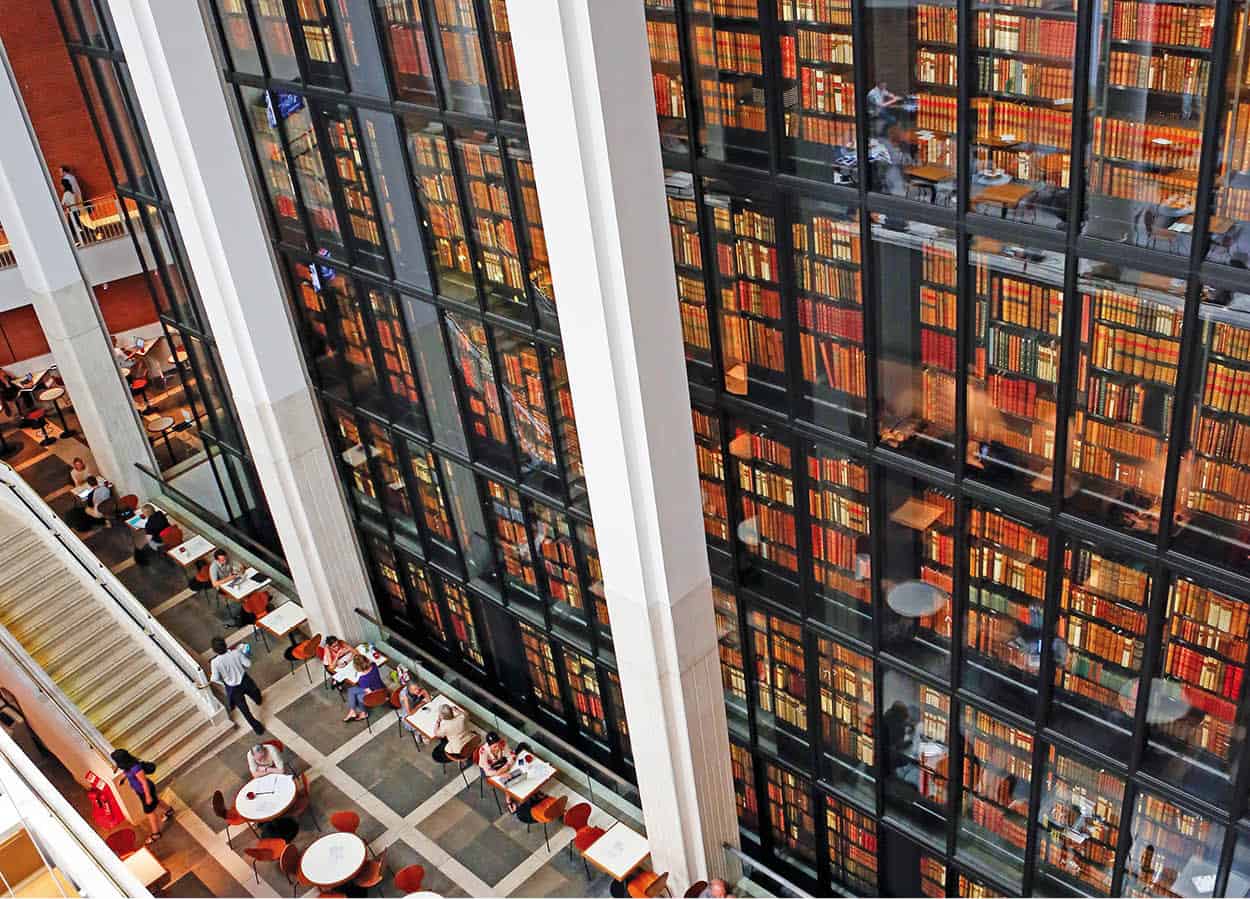
Lydia Evans/Apa Publications
Bloomsbury, Holborn and King’s Cross

Lydia Evans/Apa Publications
Discover sad realities and beautiful art at the Foundling Museum
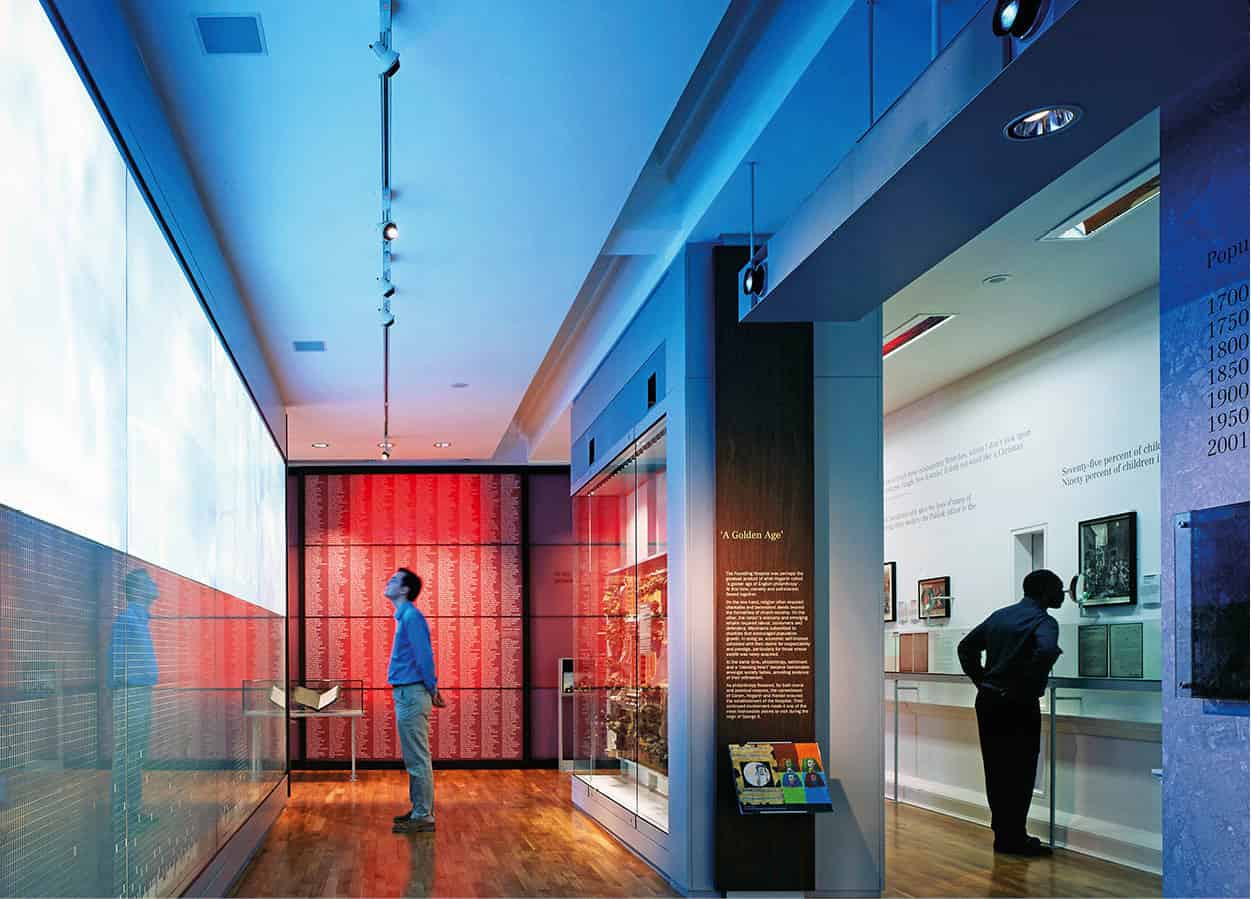
Getty Images
To walk around the graceful rooms of this fine Georgian building is to risk being overwhelmed by sadness along with fascination. Britain’s first Foundling Hospital opened on this site in 1741 with a mission to take in abandoned or illegitimate children. When a woman left her baby here she would place a ‘foundling token’ with it so that, should she ever be able to come back and claim her child, they could match her to it. The tokens were carefully recorded by the hospital. Sadly most of them stayed in the hospital, and they must number among the most poignant museum artefacts it’s possible to see. They might be a coin, a button, a ribbon, or a poem; as you look at them you can almost feel the desperation that led these often shabby little objects to be in the care of the hospital.
The Foundling Hospital was founded by Thomas Coram, a sea captain and philanthropist, with support from his two friends William Hogarth and George Friedrich Handel. Hogarth donated a fine portrait of Coram, and some etchings, to the hospital and encouraged his artist friends to donate works too. Thus it became Britain’s first ever public art gallery with a nationally important collection that includes a Gainsborough and Joshua Reynolds. The Gerald Coke Handel Collection, bequeathed to the museum in 1996, is a special collection devoted to the great composer, and includes his will and a copy of the score for the Messiah. It has some comfortable ‘musical armchairs’ – press a button and you can hear the music he wrote for the hospital – a beautiful way to end your visit.
Just opposite there’s a playground, Coram’s Fields, with fountains and a small petting zoo open to any child. Adults can only enter if they are accompanied by a child.
Foundling Museum, 40 Brunswick Square; tel: 020 7841 3600; www.foundlingmuseum.org.uk; Tue–Sat 10am–5pm, Sun from 11am; children under 16 free; [map] E4
Sample fine British beer and food in a Victorian public house
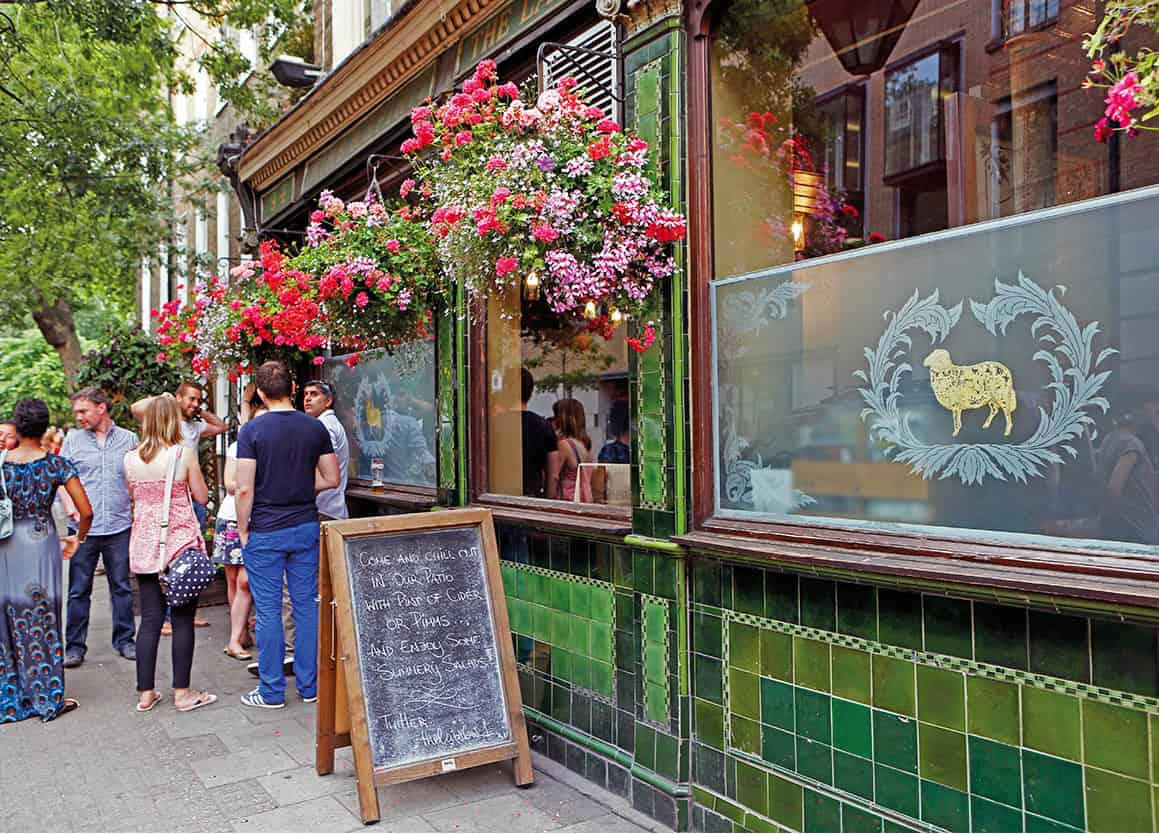
Lydia Evans/Apa Publications
The diminutive Newman Arms is loved for its Victorian décor, and even more so for 20 years for its homemade pies. But when its chefs upped sticks and moved to north London, there was a huge hungry hole that needed to be filled. Up popped Matt Chatfield, from Cornwall, who set up The Cornwall Project to promote, and transport, freshly caught fish from the southwest coast. Now the pub serves fresh seafood, caught that morning, like mackerel with fresh almonds and turbot with olive sauce.
Charles Dickens is said to have imbibed in The Lamb, a pub that is Victorian in appearance although thought to be much older. It has many associations with the Bloomsbury set, the literary elite of the mid 20th century. Step inside for a good pint of ale and upscale British pub food from local ingredients: Billingsgate fish pie or Suffolk honey-glazed gammon with triple-cooked chips.
The high-ceilinged Cittie of York with its long, dark wood bar dates back to 1430 although what you see now was built in the 1920s, and Grade-II listed. The Victorian-style snugs – cosy booths seating 6 to 8 people – are a real plus but of course these are the first spots to get taken in this very popular after-work pub. It also has a cellar bar and a ground-floor dining room.
The Newman Arms, 23 Rathbone St; tel: 020 7636 1127; [map] C2
The Lamb, 94 Lamb’s Conduit St; tel: 020 7405 0713; [map] F4
Cittie of York, 22 High Holborn; tel: 020 7242 7670; [map] G3
Enjoy a regenerated King’s Cross with a dazzling station and new food outlets
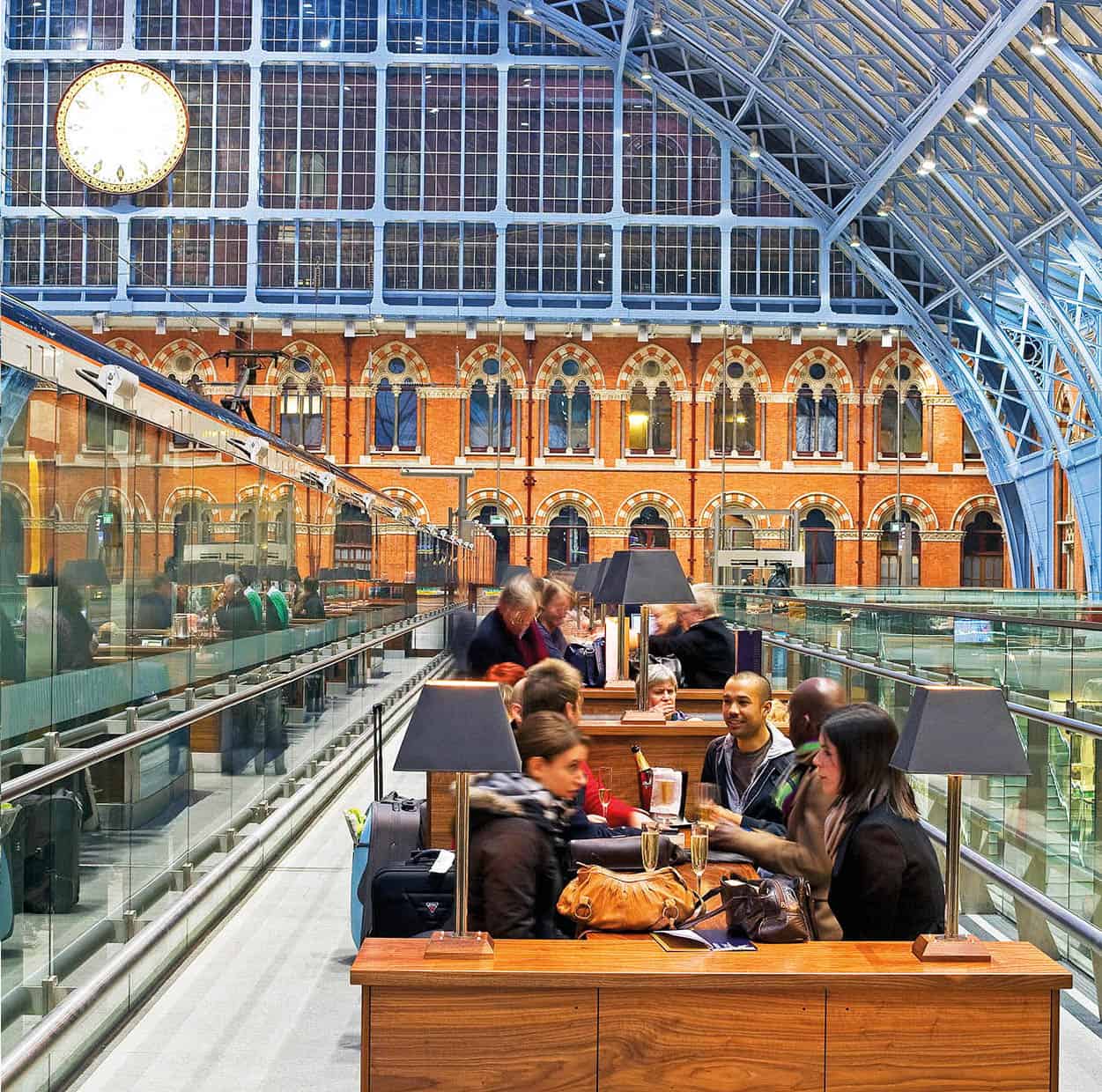
Getty Images
When the Eurostar terminal shifted from Waterloo to St Pancras International Station, it didn’t just mean a different place to board your under-channel journey to Paris – it was the forefront of a major regeneration project in the King’s Cross area. Gone are the days of unsavoury characters loitering around the old station, where you’d beat a hasty retreat after disembarking from your train. The area now boasts elegant paved walkways, light installations, lush restaurants and gloriously refurbished hotels; there’s also a renovated warehouse nestling on Regent’s Canal, now housing industrial chic restaurants and a prestigious art college.
St Pancras International station is a destination in its own right, with the famous Searcys Champagne Bar (1st floor St Pancras Station; tel: 020 7870 9900; pictured) that runs alongside the international platform below the enormous Victorian vaulted roof. There’s a slick shopping arcade with outlets of Fortnum & Mason, Hamleys and John Lewis, among other prestigious names.
A quick walk up the pedestrianised King’s Boulevard takes you over Regent’s Canal to Granary Square, refurbished and adorned with 1,000 choreographed dancing fountains. In summer it hosts outdoor concerts and a floating cinema. The great hulking 1852 Granary Building has been smartly refurbished and now houses a department of Central St Martin’s art college, but it is the eating and drinking venues that are the main draw here. Highly recommended is Caravan (1 Granary Sq; tel: 020 7101 7661), a popular restaurant and coffee roastery with open brickwork and industrial chic exposed pipes. The menu is all about small sharing plates – go for the soba noodle salad and grilled octopus with chorizo, or a mug of fresh coffee while sitting on a bar stool leaning on sacks of coffee beans. Next door is The Grain Store (tel: 020 7324 4466), where chef Bruno Loubet pays homage to the humble vegetable – except dishes are far from dull. Dishes, inspired by his world travels, include fresh fig with smoke aubergine, and carpaccio with fermented beetroot dressing and spiced labneh. Just off the square is Dishoom Godown (5 Stable St; tel: 020 7420 9321), in an old transit shed, with dishes conjuring old Bombay like nalli nihari (lamb on the bone stew with sesame onion seed naan), and okra fries.
From here you’re also close to King’s Place, the entertainment hub with two galleries, intimate music venues and a varied programme of live events, plus a large bar with a terrace overlooking the canal.
Back towards the station are two refurbished hotels with a wonderful array of eateries. The ornate Gothic Revival-style St Pancras Renaissance Hotel (www.stpancraslondon.com) on Euston Rd is a joy to see – take time to admire the exterior before heading to for dinner at the Gilbert Scott (tel: 020 7278 3888), named after the original architect, or drinks in the Booking Office Bar (tel: 020 7841 3566), once part of the station. Opposite lies the boutique Great Northern Hotel (Pancras Rd; tel: 020 3388 0818), where Plum & Spilt Milk (tel: 020 3388 0818) serves contemporary British cuisine.
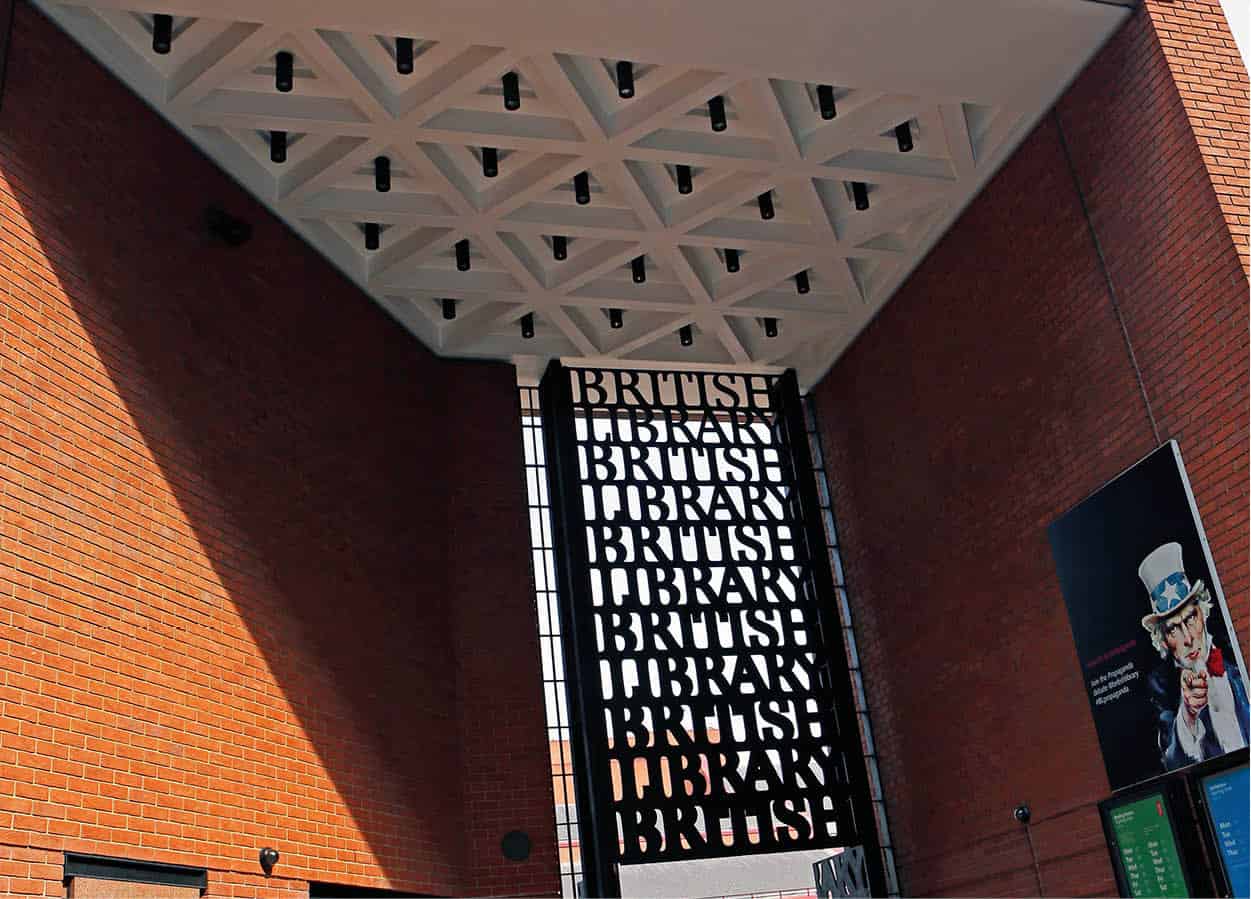
Lydia Evans/Apa Publications
There was a great deal of tutting among literary types when the British Library left its beautiful setting in the British Museum for a custom-built site near King’s Cross. But even the most die-hard critics of the plain red-brick exterior cannot fail to be charmed by the bright accommodating interior. There are five floors beneath the ground and nine above, and the corridors and open spaces are all dotted with chairs complete with bookrest, lamp and plug to charge your laptop. These are not only convenient for study but also for some of the best people-watching in the city. Academics, writers and book-lovers from all over the world come here and they make interesting viewing (anyone can visit the building, but to use the reading rooms you need to apply for a Reader’s Pass; see the website for details).
The not-so-studious can linger at the forecourt’s Last Word Café with views of Eduardo Paolozzi’s imposing bronze of Isaac Newton, beautiful in summer, or at the first-floor’s King’s Library restaurant – it’s next to the six-level glass tower containing many thousands of precious books belonging to King George III. Entry to that, unfortunately, is strictly controlled.
At any one time there are several exhibitions, comprising permanent collections and temporary exhibitions. A real highlight is the Treasures of the British Library collection (housed in the Sir John Ritblat library), which contains precious tomes from the Magna Carta, Leonardo da Vinci’s notebooks, and Shakespeare’s first folio. Back to the modern era, there’s also a crumpled piece of paper on which Paul McCartney scrawled the first lyrics to Help.
The ground floor shop has excellent books and gifts relating to their temporary exhibitions. There are also regular guided tours of the public areas.
British Library, 96 Euston Rd; tel: 020 7412 7454; www.bl.uk; Mon–Fri 9.30am–6pm, to 8pm Tue, Sun 11am–5pm; [map] D5
Get to know Sir John Soane, an obsessive art collector, and his myriad curious artefacts
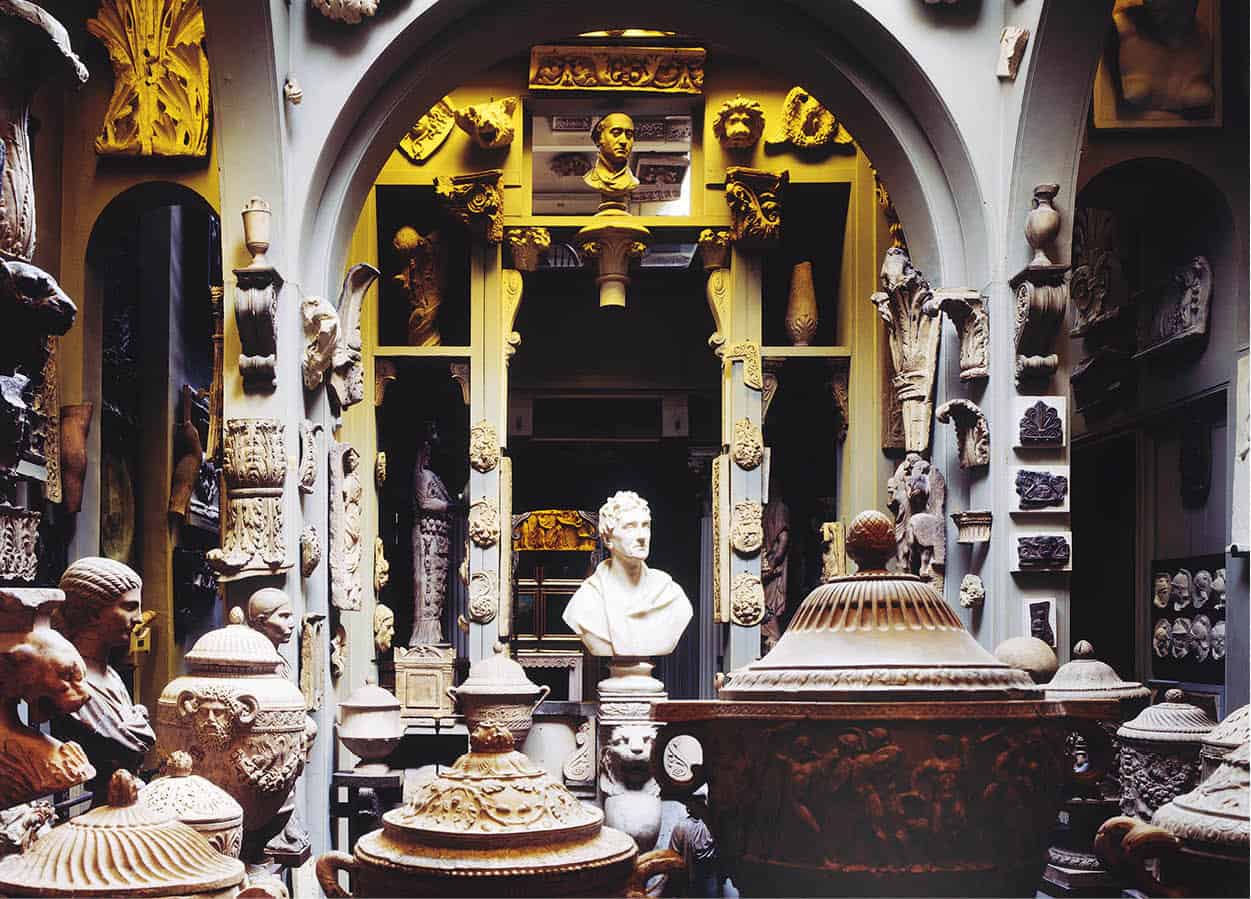
Sir John Soane’s Museum
Going to Sir John Soane’s Museum is a pretty eccentric, very British experience. It is a narrow space so crammed with precious things that unless you go early you might be asked to wait in a queue (when full, they operate a one in/one out policy). Before you enter, a smartly dressed usher will politely and firmly tell you to take off all hanging bags and put them in a carrier bag to decrease the risk of you accidentally knocking anything over. And if you ask a member of staff where the Canaletto paintings are, they might inform you to locate the statue of Apollo, lower your gaze, and, ‘the landscapes are to the left of his bottom’.
Sir John Soane was an architect, most notably of the Bank of England, but he is best known for his hobby – collecting art and antiquities around the world. Soane collected so many during his lifetime (1753–1837) that his house was known as the ‘academy of Architecture’. One of his proudest acquisitions was an alabaster sarcophagus found in Egypt’s Valley of the Kings. The British Museum decided not to buy it, allowing Soane to snatch it up, a purchase that so elated him he threw a party that lasted three days. That’s the kind of guy he was, and to visit this jewel-box of a house-museum is to take a trip into one man’s obsessions. On the first Tuesday of every month, the museum is open until 9pm and lit by candles, making it an even more spookily atmospheric place to admire a gargoyle, a mummified cat or an ancient treasure in hushed tones.
Nearby is one of London’s nicest independent coffee bars, the tiny Fleet River Bakery, where all the food – cakes, bread, soup, frittatas and salads – is freshly baked or made from scratch on the premises every day.
Sir John Soane’s Museum, 13 Lincoln’s Inn Fields; tel: 020 7405 2107; www.soane.org; Tue–Sat 10am–5pm; free; [map] F2
Fleet River Bakery, 71 Lincoln’s Inn Fields; [map] F2
Take a walk in the hidden tranquillity of the Inns of Court
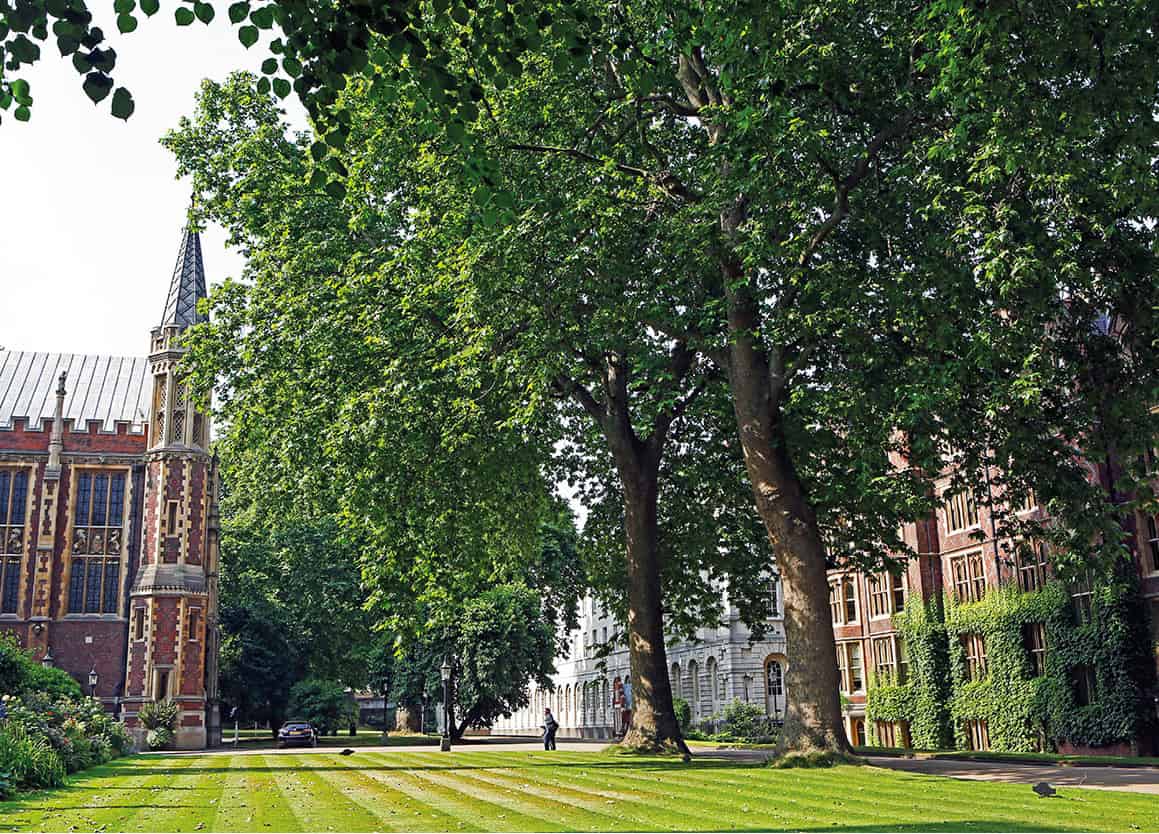
Lydia Evans/Apa Publications
If you were accidentally beamed into the Inns of Court and told to guess where you were, you’d think you had landed in the quads of an ancient university. But this hidden enclave is where London barristers train and practise. There are four Inns – Lincoln’s Inn, Gray’s Inn, Inner Temple and Middle Temple – each with quiet gardens, medieval chapels and Tudor libraries and halls. And, despite some rather stern signs (one forbids the entrance of ‘rude children’), you are welcome to pace the paths and picnic on the grass on weekdays (each Inn has slightly different entrance times, so check websites). The halls are off bounds, unless you book a tour (London Walks; tel: 020 7624 3978) but the chapels are open to the public.
All the Inns of Court are steeped in history. The Jacobean poet, John Donne, was pastor of the Gothic Chapel at Lincoln’s Inn, and his famous lines ‘Never send to know for whom the bell tolls; it tolls for thee’ were inspired by the bells that were rung to alert barristers of the death of one of their own. In 1601 Shakespeare oversaw the royal premiere of Twelfth Night at Middle Temple Hall where Queen Elizabeth I was a frequent guest. Dickens’s first job was as a clerk in Gray’s Inn, and he used the Tudor Hall in Lincoln’s Inn as the setting for Bleak House. But whether you are interested in olden times or just want to rest a while in a peaceful garden – the Inns of Court are one of the city’s most rewarding hidden treasures.
Inner Temple; tel: 020 7797 8250; www.innertemple.org.uk; [map] G1
Middle Temple; tel: 020 7427 4800; www.middletemple.org.uk; [map] G1
Lincoln’s Inn; tel: 020 7405 1393; www.lincolnsinn.org.uk; [map] G2
Gray’s Inn; tel: 020 7458 7800; www.graysinn.info; [map] G2
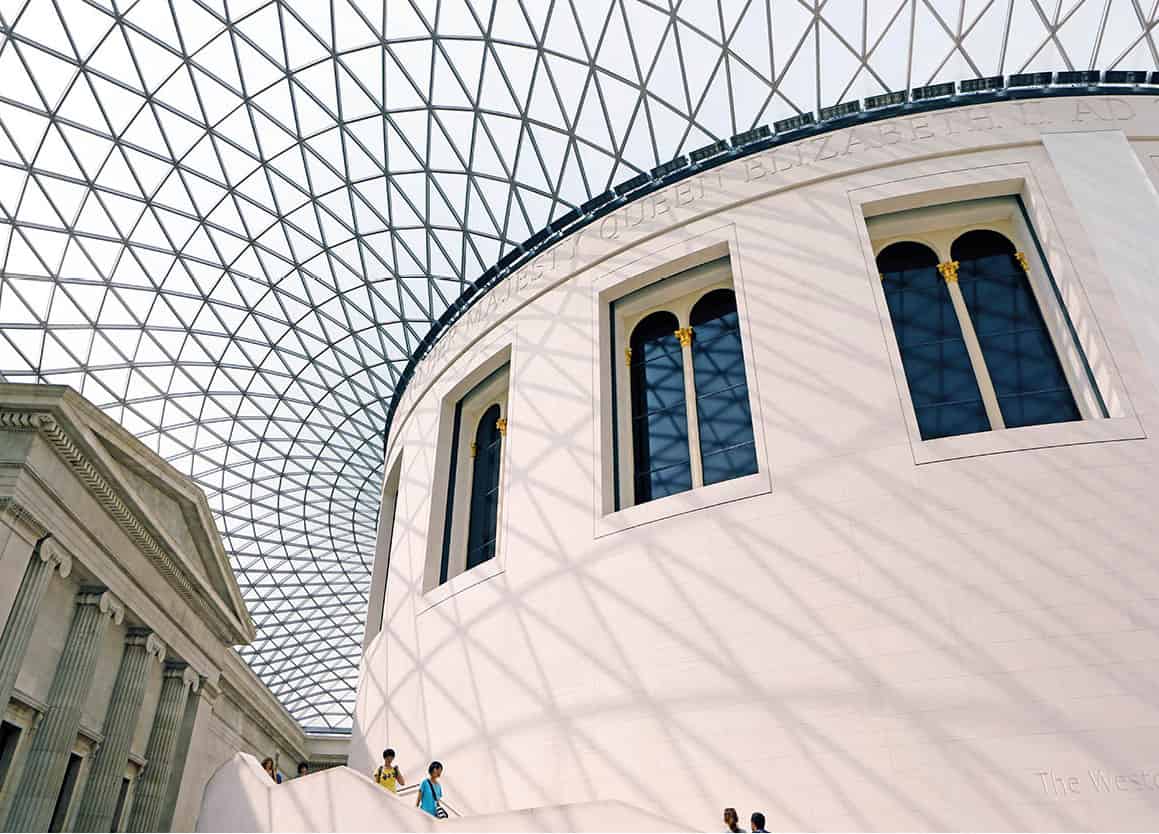
Lydia Evans/Apa Publications
The Great Court at the British Museum is the largest enclosed courtyard in Europe, and, with its magnificent glass roof, is a fittingly grand entrance to one of the greatest displays of antiquities in the world. There are eight million objects here that between them document the rise and fall of all the greatest civilisations. ‘Only’ about 80,000 of them are on display, but to do it all justice and have even the quickest squint at every one would take years. Here follows a suggested tour covering all areas which can be done in half a day:
Start in Ancient Civilisations on the ground floor, reached via the Great Court. Room 4 has the Egyptian sculptures including a magnificent bust of Rameses II, and the Rosetta Stone, which was discovered by Napoleon’s army in the Nile Delta and provided the key to deciphering Egyptian hieroglyphs. Next up are the Greeks in Gallery 18 and the Elgin Marbles – an exquisitely detailed frieze from the colonnade of the Parthenon. In 2015 there was an unsuccessful bid by the Greek government to reclaim them.
Go up the West Stairs and into the Ancient Near East rooms where you can see beautiful Turkish and North African mosaics on your way through to the Egyptian Galleries (62 and 63) where the mummies lie resplendent and you can learn all about how it was done thanks to an at-a-glance guide on the wall. Further on you’ll reach gallery 56 and the magnificent Babylonian Queen of the Night, a generously curved woman on a clay plaque. Walk back through galleries 63 and 66 to reach the North Stairs which are dominated by the giant Chinese figure of the Amitabha Buddha.
In Room 40 tacticians and gameplayers should stop to admire the 11th-century Lewis Chessmen. Descend to the Hotung Gallery (33) to see a gracefully expressive gilt-and-bronze statue of the Buddhist goddess Tara from Sri Lanka. Exit the Hotung gallery and walk downstairs into the Wellcome Trust Gallery (24) to see the sacred if rather grumpy aspect of the Easter Island Statue. And don’t miss the Mexican sculpture of Tlazolteotl in Room 27 before returning to the Great Court for a coffee and sandwich.
You shouldn’t leave, however, without a quick look round the Enlightenment Gallery. It celebrates the great age of discovery when British naturalists, historians and scholars scoured the world for objects to help them to better understand life as it is, and was, lived. There is a replica of the Rosetta Stone that you are allowed to touch, and a hands-on table where you can have a feel of fossils, coins, arrowheads, tiles or pots. Its temporary exhibitions are popular, and advance online booking is recommended.
British Museum, Great Russell St; tel: 020 7328 8181; www.britishmuseum.org; daily 10am–5.30pm; most galleries open Fri until 8.30pm; [map] D3
Savour the delights of a quirkily charming thoroughfare, Lamb’s Conduit Street
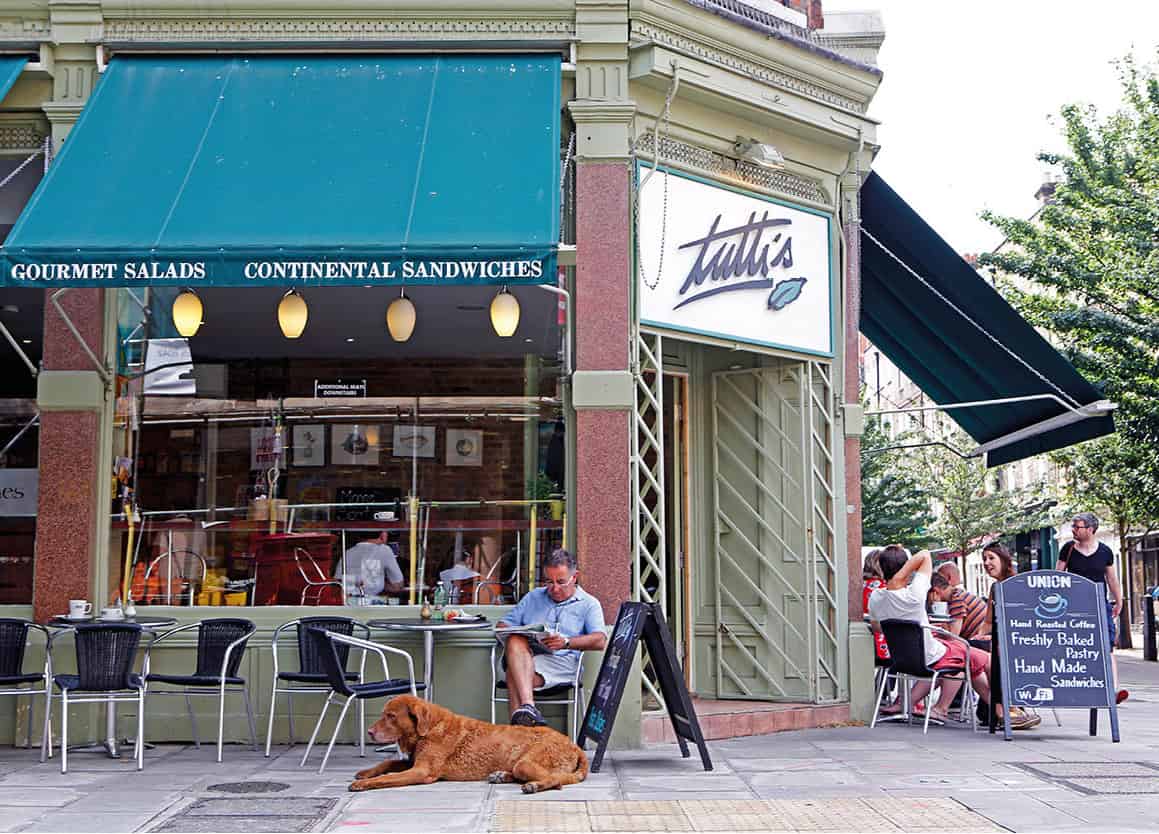
Lydia Evans/Apa Publications
Lamb’s Conduit Street (LCS) is an enclave of independent shops – the vast majority are pure London originals. If variety is the spice of life, this street has a little bit of everything you fancy.
There has been a recent trend for men’s clothing on LCS and guys could completely get themselves kitted out. Oliver Spencer (62) is mostly menswear of a cool, relaxed, military inspired kind, while Folk (49) sells affordable ‘unrestrictive’ modern leisure wear. Folk Clothing has men’s (49) and women’s (53) upscale fashionable clothing including casual suits and attractive panel dresses – and there’s also a men’s barber. There are two bespoke tailors for suits made to suit you, sir: Connock & Lockie (84a) was established in 1902 and creates suiting from the very first stage of pattern making; and Sims & MacDonald (46) specialises in luxury fabrics, cashmere and wool and camelhair for coats. Simon Cart (36a) has everything for the well-dressed man about town, from lambswool jumpers to a textured bobble tie clip.
Feed your mind at Persephone Books (59), a publishing house and bookseller with a mission to reprint neglected women writers such as Monica Dickens and Noel Streatfeild in beautifully designed editions.
For many, The Lamb is the main attraction on LCS, a lovely old pub of the kind that are disappearing too fast and becoming relics of the past. There are other options for food and drink: Cigala (54) is a Spanish restaurant with intriguing tapas and Spanish cocktails. Tutti’s (68), pictured, is a homely bustling café for pasta, coffee and paninis – good for a pit stop. For something more substantial, relax your weary legs (and rest your shopping bags) at La Gourmandina (57) for a lunchtime baguette, a selection of artisan Italian cured meats and – for those with a real appetite – rabbit stuffed with Tuscan sausage.
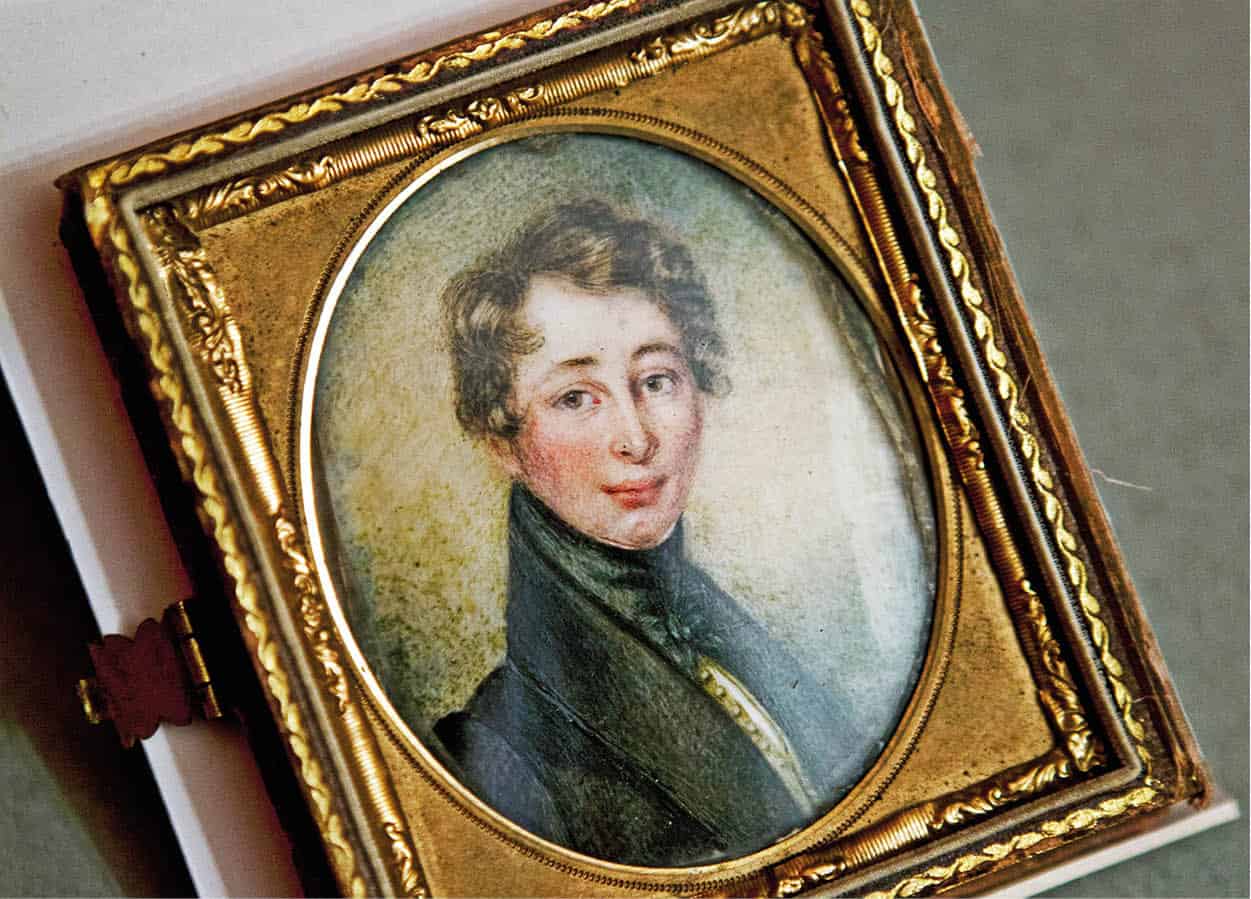
Getty Images
Dickens was an energetic and restless soul. Before becoming the novelist and showman he is best known as, he had several jobs, and followed many interests – philanthropic, theatrical and academic – to which he devoted much time and on which he wrote copious essays. He had ten children, one wife and several intense friendships with women about which there was much speculation. He moved his family into 48 Doughty Street in 1837. And though he only lived in it for two years, he managed in that time to complete The Pickwick Papers, write the whole of Oliver Twist and Nicholas Nickleby, commence Barnaby Rudge, and father three children. This was a prodigious output by any standards, and you can detect some of the great man’s intense energy as you admire the little desk beneath the window overlooking the back garden where he sat and wrote every day. Throughout December the Charles Dickens Museum holds special events, decorating the house with special Victorian furnishings. A huge attraction is the reading of A Christmas Carol to raise money for charity; this sells out quickly. There are also atmospheric candlelit evening openings.
Fans of the Victorian age in need of a pick-me-up should make a beeline for Bea’s of Bloomsbury, a pretty little tearoom where they can enjoy good old-fashioned tea and cake: mini meringues, Valrhona brownies and delicate sandwiches. There’s an open-air pastry kitchen and an informal café setting.
Charles Dickens Museum, 48 Doughty Street; tel: 020 7405 2127; www.dickensmuseum.com; daily 10am–5pm; [map] F4
Bea’s of Bloomsbury, 44 Theobald’s Road; tel: 020 7242 8330; [map] F3
Gain a little more understanding of the definition of London life at Dr Johnson’s House

Lydia Evans/Apa Publications
Dr Johnson must be one of the most quoted men in the English language – his immortal line, “When a man is tired of London, he is tired of life” is trotted out by all those who love the capital. It was in the garret of this charming early 18th-century town house that Dr Johnson laboured for nine years to produce the world’s first comprehensive dictionary of the English language. Reproductions of the first edition with its 42,773 definitions lie open on the table in the study so you can choose your own favourite words. One phrase not in there is Tourette Syndrome, although Johnson with his frequent tics and involuntary gestures has been posthumously diagnosed with the condition. This is thought to be the reason he was unable to follow his chosen profession of teacher and was forced to become a writer, a job in which he could remain largely out of view, and unteased by children.
There is plenty of life in this house. Sadly Dr Johnson’s beloved wife Elizabeth, or Tetty, died in 1752. Overcome with grief, his response was to fill his home with people. He took in random relatives and lodgers and surrounded himself with company. There are well-written and interesting explanatory cards in each room describing who lived there and the parties and activities that took place. It is a fascinating insight into a lost world – especially if you take some quiet time in the library and soak up the tranquillity. If you want to take it outdoors, there is a walk around all Dr Johnson’s favourite places – pubs and printing houses mostly – at 3pm on the first Wednesday of every month.
Dr Johnson’s House, 17 Gough Square; tel: 020 7353 3745; www.drjohnsonshouse.org; Mon–Sat 11am–5.30pm, Oct–Apr until 5pm; [map] G2
Discover one-of-a-kind shops in historic buildings
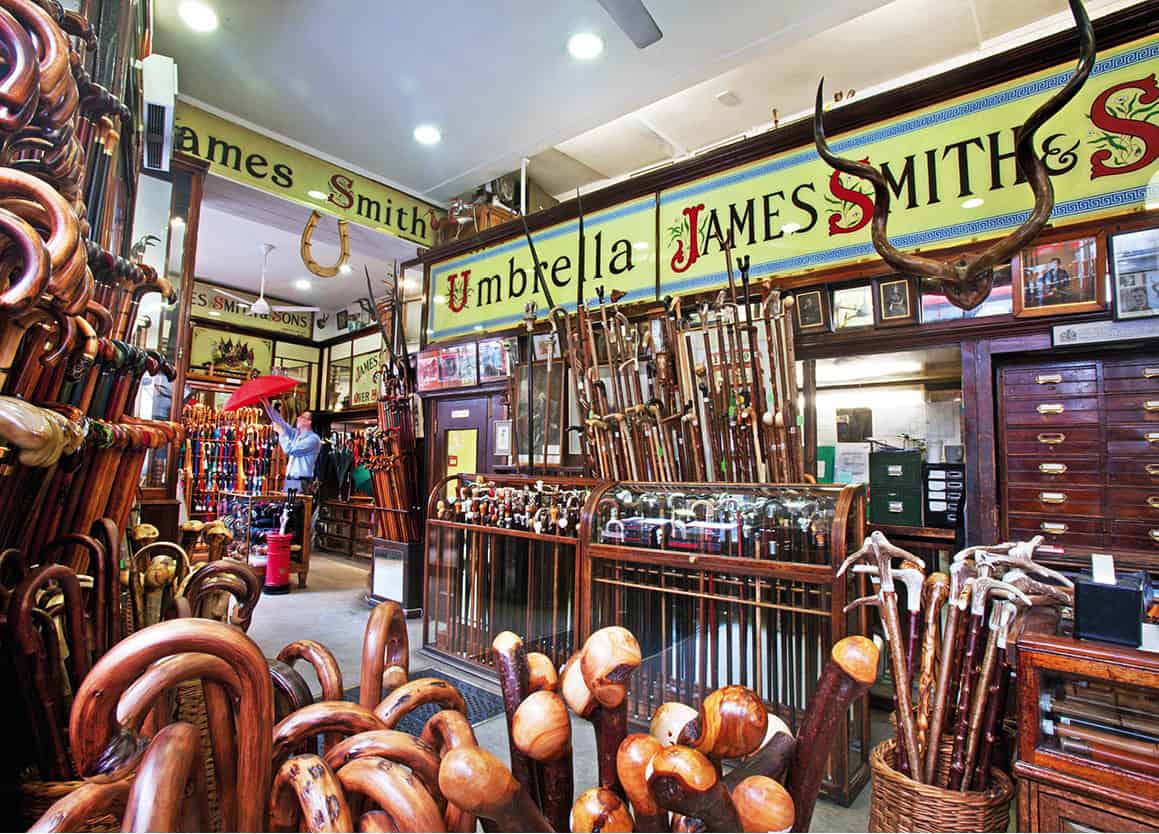
Jorge Royan
This is just a guess, but it’s possible you might need an umbrella while in London. If you forgot to pack one or fancy buying a special new one, proceed directly to James Smith & Sons (53 New Oxford St; [map] E2), which has been in business since 1830. The shop is packed to the gunwales with umbrellas of all shapes, sizes and colours. Some of them are still made on the premises, and you can watch as one of the staff stitches the handmade items together. They cost up to around £250, so if you do buy one, try not to leave it on the tube the next day.
You are unlikely to actually need a toy, but they are always nice to look at. Especially at Pollock’s Toy Museum and Toy Shop (1 Scala St; [map] C3), which takes up two four-storey 18th-century houses and is most famous for its collection of Victorian model theatres. Children love looking at the weird and wonderful playthings of the past, and there’s a shop next door selling modern replicas of many of them.
The area around British Museum has many antiquarian bookshops, reflecting its strong literary heritage. Sadly many of these are closing, due to high rents and less custom. But one place to have stood the test of time is Jarndyce (46 Great Russell St; [map] D2), antiquarian booksellers established in 1969. The building dates back to 1730 and it’s been a bookshop since 1890; the 19th-century illustrator Randolph lived and worked here – you’ll see the blue plaque outside. Look out also for the ghost of a Scotsman in a kilt – it’s said to be haunted.
Uncover tucked-away museums and medical marvels
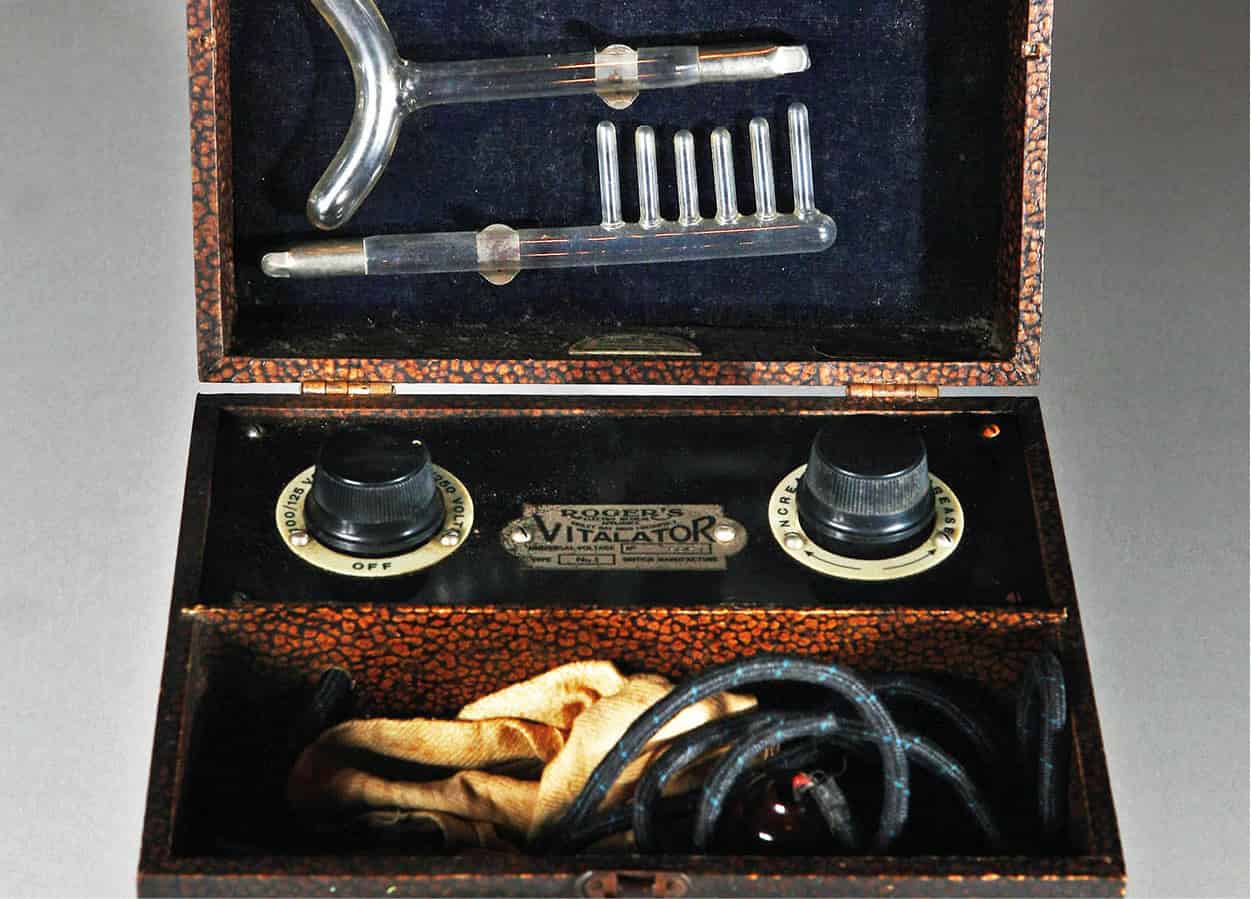
Getty Images
If you’re a fan of ancient Egypt but find the crowds at the British Museum too much, then there is a gem of a collection in the University College London. Tucked away in the UCL’s campus is the Petrie Museum of Egyptian Archaeology, which crams around 80,000 objects into its display cases. This is about as far removed from a high-tech, multimedia interactive museum as you can get, but that is its charm. The emphasis is on the pieces – after all this is one of the world’s greatest collections of Egyptian and Sudanese archaeology. It has the world’s oldest wills, on papyrus, and a beadnet dress of a dancer from 2400 BC, as well as the world’s largest collection of Roman period mummy portraits.
The university also houses the Grant Museum of Zoology – a veritable feast for anyone who likes to gaze at strange ‘dead things’ in ball jars. It was founded in 1828 as a teaching collection, and now the museum is filled with skeletons, mounted animals and specimens preserved in fluid.
Close by, the Wellcome Collection houses the personal collection of Dr Henry Wellcome – an eye-watering historical display of medical implements from around the world. While asking yourself, “Did they really use one of those?” and flinching at the tools used for assisting childbirth and amputations (saws and stirrups), it does make you appreciate medical research and progress. It also holds evening events and temporary exhibitions, plus an outstanding bookshop and huge café.
Petrie Museum of Egyptian Archaeology, UCL, Malet Place; tel: 020 7679 2884; www.ucl.ac.uk; Tues–Sat 1–5pm; [map] C4
Grant Museum of Zoology, UCL, Malet Place; tel: 020 3108 2052; Mon–Sat 1–5pm; [map] C4
Wellcome Collection, 183 Euston Rd; tel: 020 7611 2222; http://wellcomecollection.org; Tues–Sat 10am–6pm, Thur until 10pm, Sun 11am–6pm; [map] C4